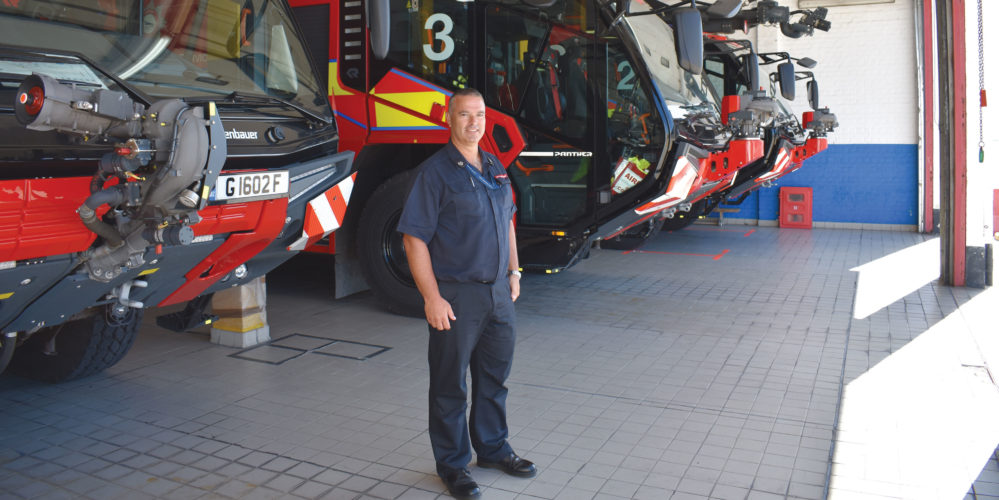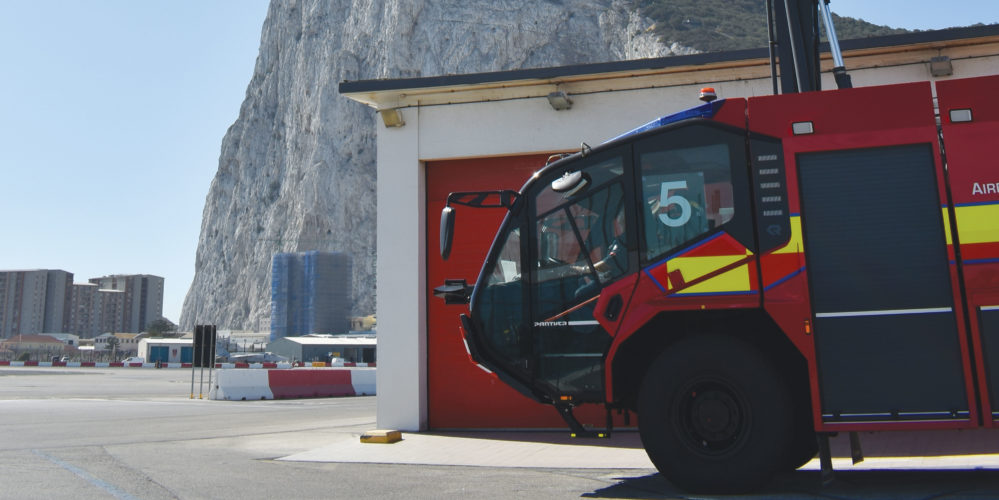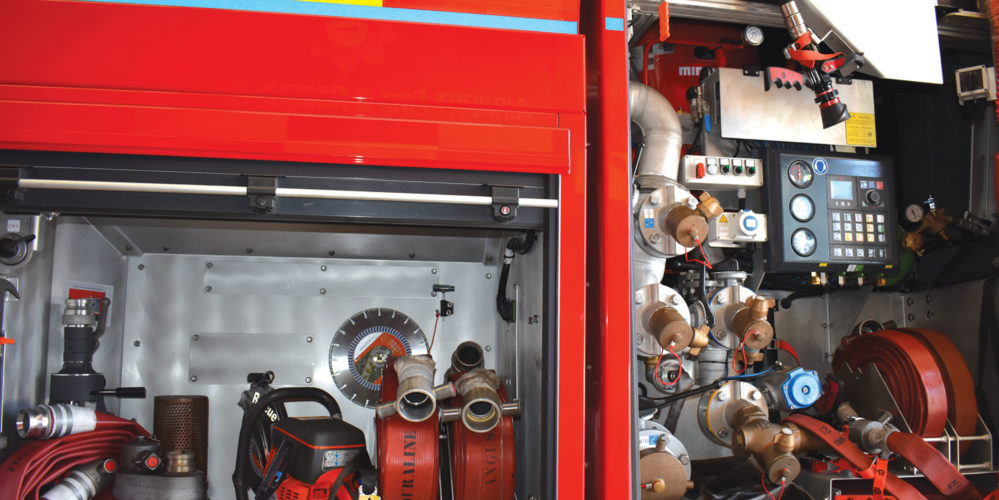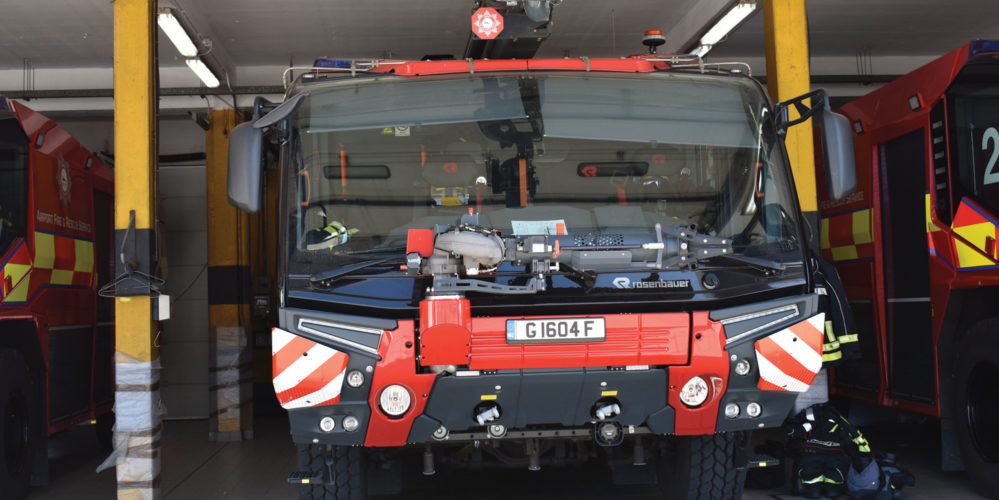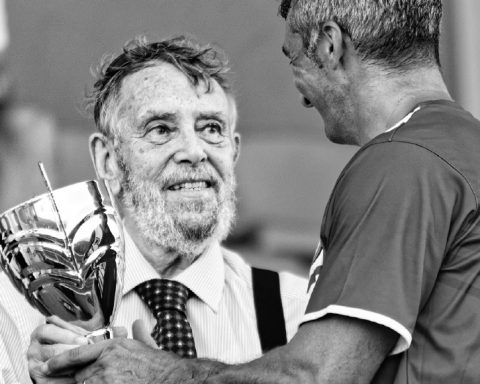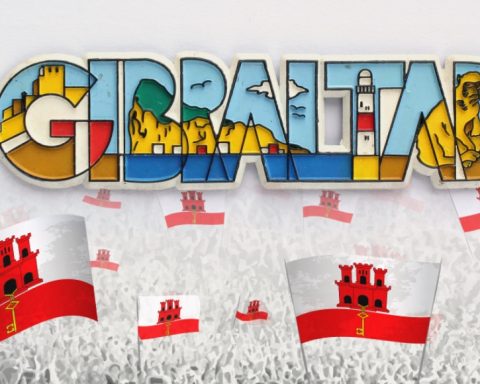Safety is the main concern at airports and it’s down to the Gibraltar Airport Fire & Rescue Service (AFRS) to protect the life of passengers, workers and tourists at Gibraltar Airport and in certain other instances around the Rock. As we already know, Gibraltar Airport has its own challenges with a short runway and with the sea at both ends. There is also the added complication of having a main road crossing the runway, which brings its own problems, but the AFRS is always prepared for any eventuality and ready to respond. Senior Fire Officer Nicky Viñales shows Insight’s Jo Ward behind the scenes and lets her get up close to their new state-of-the-art fleet of vehicles.
Nicky Viñales has worked as a firefighter for the past twenty-seven years, but took on the role of Senior Fire Officer in 2015, at exactly the same time as the new fleet of firefighting vehicles arrived. He explains that the airport is MoD owned and operated but that the civilian side has its own Air Terminal. “In October 2015 the Defence Fire & Rescue Service was handed over to the Gibraltar Government, who now owns the organisation, but the MoD continues to co-fund the organisation as well as the procurement of the equipment.”
The Airport Fire Station situated near the North Barrier at the side of the airfield consists of the usual administration offices, a training room, rest room, gym and a kitchen that at the time of my visit was emitting some very pleasant cooking smells. “One of the firefighters is detailed every day to cook,” Nicky says. “Shifts start at 8 am and finish when the air field shuts which is usually around 9 pm at night, so the bulk of the work is undertaken in the morning and then in the afternoon it’s stand down time and when training takes place.”
There are a total of 28 firefighting personnel operating on a two-watch 13 hour shift system. “It is a small organisation but we have lots of capabilities,” Nicky tells me, continuing: “We do pretty much everything that the Gibraltar Fire & Rescue Service (GFRS) does, except diving, as well as the aviation side of things, so we are nearly fully interchangeable.”
As well as providing support to the GFRS on request, the AFRS form part of the MoD Nuclear Emergency Response Organisation and were on hand for the blaze at the North Mole Bunkering Facility in 2011. They also carry out numerous skills and specialties including Aviation, Structural (working at height and in a confined space), as well as Maritime where they provide fire cover for naval vessel ammunitioning of ships and submarines and for road ammo. Nicky adds that the firefighters are First Responder First Aid trained and that they also have some hazardous materials advisors.
Both the AFRS and the GFRS work to British procedures with training primarily done in the UK, other than for refresher courses. “Next year we are all due a refresher and in the past we used to have to fly people over to the UK to different training establishments, but now we are able to bring out a couple of instructors and they can train the whole station over a week or two,” he states.
It goes without saying that firefighters are imbued with integrity and dedication, and that ongoing and daily training is an essential part of what they do. There is also no doubt that if any of them had a childhood dream to become a firefighter, they could not have envisaged the magnificent bespoke vehicles that they now operate.
The new fleet consists of three Rosenbauer PANTHER 6×6 trucks, one 4×4 Rosenbauer PANTHER, two command support utility vehicles and a light rescue unit. Rosenbauer is the world’s leading technology and service provider of fire fighting vehicles and it is not just the vehicles that are different to the ones they have replaced, it is also the firefighting tactics, as Nicky outlines. “The other vehicles carried a lot less water and foam on board and you had to be very measured in terms of how much water and foam you were using because it was expelled at 6,000 litres per minute and the water/foam was gone very quickly, so it entailed a lot more manual firefighting.” With the new roof monitor water can be deployed with a 90 metre jet throw.
The three bigger vehicles have a water capacity of 11,500 litres and 1,500 litres of foam, whilst the smaller vehicle has a water capacity of 6,500 litres which is only slightly less than the old large vehicles at 6,800 litres.
The award-winning modern firefighting vehicles have been designed specifically for the needs of Gibraltar’s AFRS. “Different airports have different requirements and one of the items we requested were, for instance, extendable hose reels on an arm that swings out,” Nicky says. The other thing that is noticeable is that everything is automated. “This is very much for the PlayStation generation,” Nicky laughs as he explains that his firefighters have no real issues with joysticks, screens and buttons. “However, it has involved a lot of retraining because the old vehicles had more conventional levers and switches.”
Everything about the vehicle is evocative of the sleek big cat with which it shares its name – the Panther, full of power and elegance. It is a high climb up into the cab of the 6×6 which offers a comfort previously unseen in older trucks. There is room for five or six personnel, and the automated system allows for one firefighter to control everything from inside whilst the rest of the team are deployed dealing with the incident. Nicky points out the electronically controlled high reach turrets which extend up to 16 metres high, but it is impossible not to notice the impressively huge tyres, which he points out have rear wheel drive steering making it easier to manouvre the vehicle.
The smaller 4×4 can carry similar equipment, but is more geared towards the rescue element, carrying the bulk of the cutting and hydraulic lifting gear. “We have got total flexibility within our fleet but they all have a specific role within the fire vehicle line-up,” Nicky comments.
Another specification asked for was a pump that could withstand corrosion. Nicky explains that the vehicles normally carry fresh water but the hydrant systems in Gibraltar contain sea water, so obviously they needed a pump that would be more resistant to the corrosive nature of salt water.
Back in his office, Nicky gives me a short history of the AFRS. “The origins stem from the Army Fire Service which used to exist at Europa, and when the Admiralty Fire Service at the Naval base closed in 1992, it amalgamated with the RAF Fire Service, replacing RAF personnel, he tells me, “which then became the Defence Fire & Rescue Service up until 30th September 2015.”
The airport is civilian owned and has its scheduled flights, but Nicky explains that the AFRS operates very much within an aviation compliance regime. “Everything that we do, all the training, the testing of equipment and the competencies of the firefighters, has to be recorded and for this we use the RedKite Management software system.” They are also subject to periodic UK Civll Aviation Authority and MoD audits.
Although hard work and training are an integral part of a firefighter’s job, they provide a vital public service that we rarely think about until they respond to an incident, and this is particularly true of the AFRS who work and train hard to keep our community safe, now with even better vehicles and equipment to enable them to do so.

